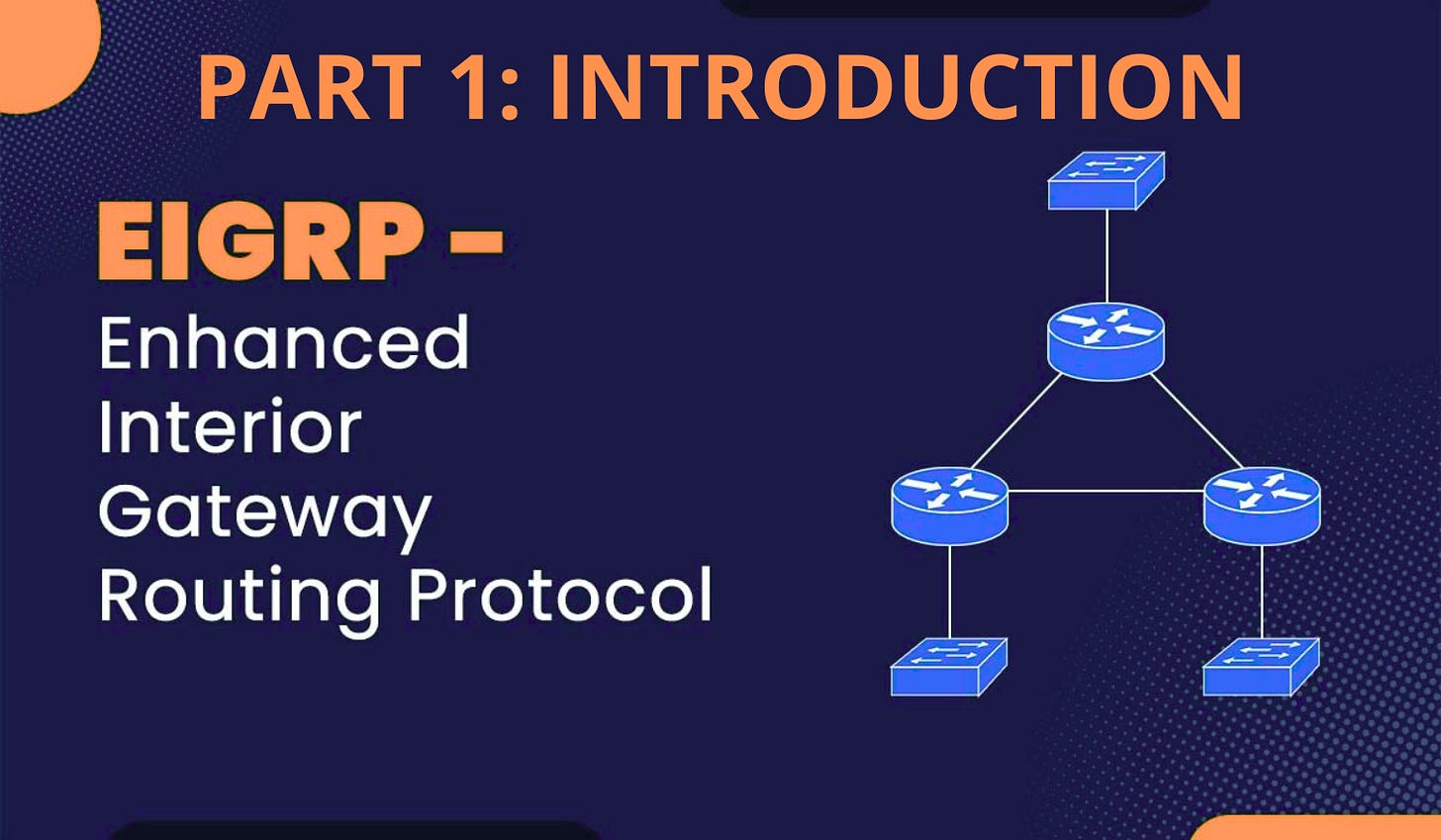PART 1: Introduction to EIGRP
Enhanced Interior Gateway Routing Protocol
EIGRP is an advanced distance vector routing protocol developed by Cisco that offers significant improvements over traditional distance vector protocols like RIP. Originally proprietary to Cisco until 2013, EIGRP was later released as an open standard, allowing implementation by other network equipment vendors.
General IGP Workflow
Most Interior Gateway Protocols follow this general workflow:
Form neighbor relationships through a two-way hello exchange
Learn routes from other routers using the same routing protocol
Advertise local routes to neighbors
Calculate the best path when multiple paths to a destination exist
Note: RIP is unique among IGPs as it doesn't form explicit neighbor relationships and operates on periodic Multicast/broadcasts instead.
EIGRP Classification
EIGRP is often classified as an "Advanced Distance Vector" protocol or a "Hybrid Protocol" because it combines features from both distance vector and link-state protocols:
Distance Vector characteristics: Routing updates contain path (vector) and metric (distance) information. Unlike true link-state protocols, EIGRP doesn't maintain a complete topological map of the network.
Link-State characteristics: EIGRP forms explicit neighbor relationships and only exchanges routing information when network changes occur, rather than periodically flooding the network with updates like RIP.
Technical Details
Protocol Specifics
Protocol Number: 88 in the IP header
Multicast Address: 224.0.0.10 for IPv4 and FF02::A for IPv6
Reliability: Uses acknowledgments for all packet types except Hello messages
EIGRP Message Types
Type 1: Update (routing information)
Type 3: Query (route request)
Type 4: Reply (response to query)
Type 5: Hello (neighbor discovery and keepalive)
Type 10: SIA Query (Stuck-In-Active query)
Type 11: SIA Reply (response to SIA query)
Note: Type 6 (IPX SA) is related to the obsolete IPX protocol and is not used in modern networks.
EIGRP Metric Components
EIGRP uses a composite metric calculated from multiple network attributes:
Bandwidth (minimum bandwidth along the path)
Delay (cumulative delay)
Load (link utilization)
Reliability (link reliability percentage)
MTU (Maximum Transmission Unit)
Hop count (used as a tiebreaker)
By default, only bandwidth and delay are actively used in metric calculations, though the other components are available for custom configurations If supported by the vendor.
Routing Updates
Update Types
Full Update: Sent only during initial neighbor establishment
Partial Update: Sent only when network changes occur (route failures, metric changes)
Loop Prevention Mechanisms
EIGRP employs several methods to prevent routing loops:
Split Horizon: Prevents sending information about a route back through the interface from which it was learned
Route Poisoning: Marks unreachable routes with an infinite metric
Poison Reverse: Advertises unreachable routes back to the source with an infinite metric (overriding split horizon)
TTL Configuration
EIGRP packets are sent with a TTL (Time To Live) value of 2, which might seem excessive since these packets typically remain on the local link. However, this configuration accommodates Hub-and-Spoke topologies where spoke routers need to communicate with each other through the hub. RIP uses a similar approach for its packets.
EIGRP Advantages Over RIP
Faster convergence time
More efficient use of bandwidth (updates only when changes occur)
Support for unequal-cost load balancing
More sophisticated metric calculation
VLSM (Variable Length Subnet Mask) support



